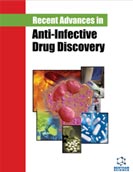
Abstract
Introduction: The analyses of local risks at sub-national levels and tailored interventions are being emphasized for effective HIV management. Andhra Pradesh (AP) is a high HIV prevalence state in India, with the second-highest number of People with HIV (PWH) and a consistent decline in HIV prevalence at the state level. Probing further into the region and district-wise levels and trends of HIV prevalence will provide critical insights into sub-regional epidemic patterns. Hence, this paper analyzes the regional and district-level trends of HIV prevalence among pregnant women attending antenatal clinics (ANC) from 2003 to 2019 in AP, South India.
Methods: HIV prevalence data collected from pregnant women in AP during HIV Sentinel Surveillance (HSS) between 2003 and 2019 was used for trend analysis. The consistent sites were grouped into three regions (Coastal Andhra, Rayalaseema and Uttar Andhra), totaling 39 sites, including 21 rural and 18 urban sites. Regional and district-level HIV prevalence was analyzed using the Chisquare trend test, and spatial analysis was done using QGIS software. For the last three HSS rounds, HIV prevalence based on sociodemographic variables was calculated to understand the factors contributing to HIV positivity in each region.
Results: In total, 143,211 pregnant women were recruited. HIV prevalence in AP was 0.30% (95% CI: 0.22 - 0.39) in 2019. The prevalence was 0.31%, 0.35% and 0.22% in Coastal Andhra, Rayalaseema and Uttar Andhra, respectively. HIV prevalence had significantly (P < 0.05) declined in all regions. The overall trend indicated that the HIV prevalence was higher among older pregnant women and in urban regions. However, recent trends consistently report HIV positivity among young and new pregnant mothers, illiterates, and rural regions.
Conclusion: The overall trend indicated that the HIV prevalence was higher among older pregnant women and in urban regions. However, recent trends consistently report HIV positivity among young and new pregnant mothers, illiterates, and rural regions. Identifying the contextual risk patterns associated with HIV transmission will further improve HIV preventive and management programs among the general population.
Keywords: HIV/AIDS, HIV sentinel surveillance, pregnant women, prevalence, trend, Andhra Pradesh.
Graphical Abstract
[http://dx.doi.org/10.1371/journal.pone.0216321] [PMID: 31063471]
[http://dx.doi.org/10.1136/sextrans-2011-050382] [PMID: 22510332]
[PMID: 29923539]
[http://dx.doi.org/10.1371/journal.pone.0048827] [PMID: 23166595]
[http://dx.doi.org/10.1080/09540120701336392] [PMID: 18058402]
[http://dx.doi.org/10.1016/j.protcy.2016.05.233]
[http://dx.doi.org/10.1371/journal.pone.0164001] [PMID: 27711212]
[http://dx.doi.org/10.4103/ijmr.IJMR_1619_19] [PMID: 32719229]
[http://dx.doi.org/10.1136/bcr-2014-204635] [PMID: 25015167]
[http://dx.doi.org/10.1371/journal.pone.0131629] [PMID: 26147208]
[http://dx.doi.org/10.1186/1471-2458-11-S6-S1] [PMID: 22376071]
[http://dx.doi.org/10.1186/1471-2458-14-64] [PMID: 24447623]
[http://dx.doi.org/10.1136/sextrans-2011-050108.580]
[http://dx.doi.org/10.1093/trstmh/tru025] [PMID: 24627424]
[http://dx.doi.org/10.1016/S0140-6736(11)61390-1] [PMID: 21993161]
[http://dx.doi.org/10.29392/joghr.3.e2019041]
[http://dx.doi.org/10.1177/2325958218773768] [PMID: 29756550]
[http://dx.doi.org/10.1080/09540121.2017.1394964] [PMID: 29084445]
[http://dx.doi.org/10.1186/1471-2458-11-S6-S6] [PMID: 22375813]
[http://dx.doi.org/10.4103/ijph.IJPH_60_20] [PMID: 32295953]























